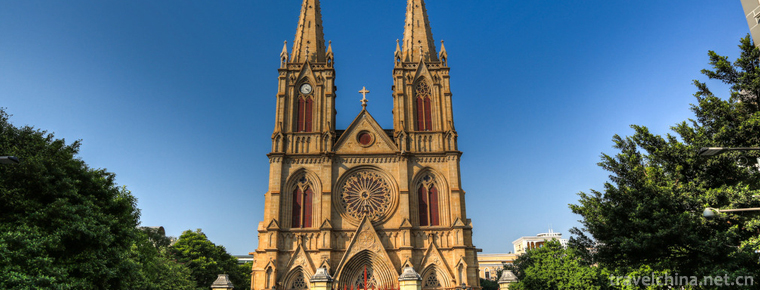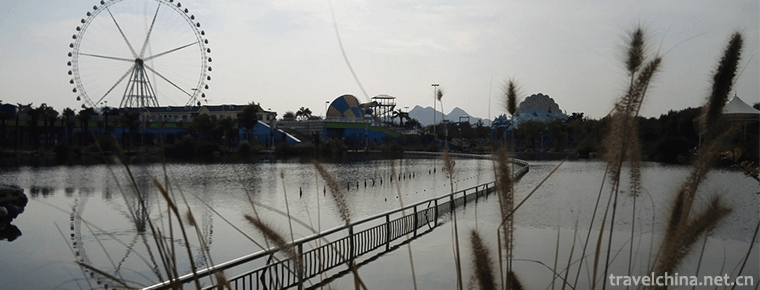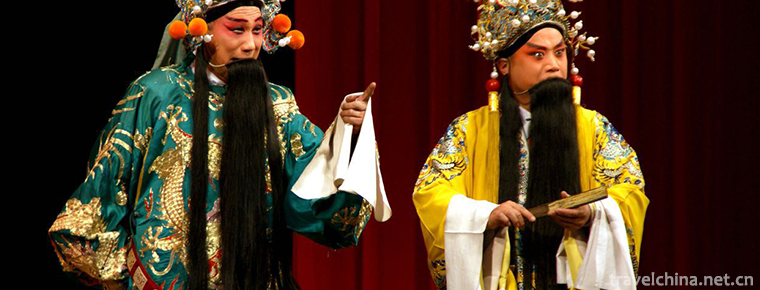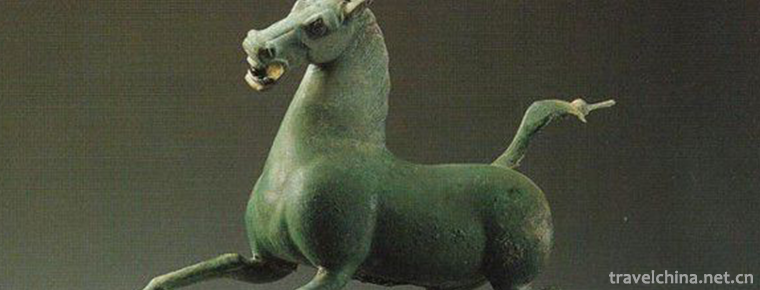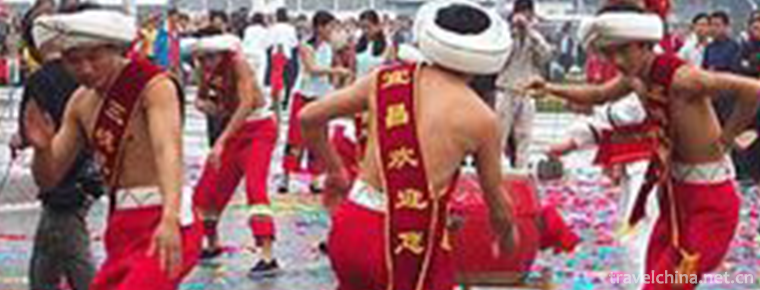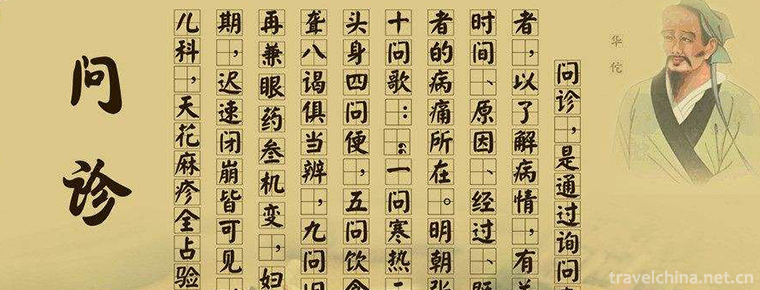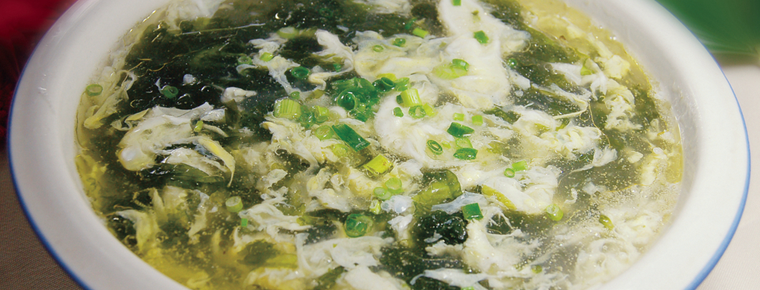Brocade Weaving Skills of the Zhuang Nationality
Brocade Weaving Skills of the Zhuang Nationality
The brocade weaving technique of the Zhuang nationality, the traditional handicraft of Jingxi County, Guangxi Zhuang Autonomous Region, is one of the national intangible cultural heritages.
After thousands of years of development, the brocade has its own system of three categories, more than 20 varieties and more than 50 patterns. It is famous for its durability, exquisite skills, unique patterns and exquisite patterns.
On May 20, 2006, the brocade weaving skills of the Zhuang nationality were approved by the State Council and listed in the first batch of national intangible cultural heritage list.
historical origin
The brocade weaving technique of the Zhuang nationality has a long history. As early as the Tang and Song Dynasties, brocades with better craftsmanship had been formed. At that time, banana cloth, bamboo cloth, gibel cloth, spotted cloth and silk cloth of the Zhuang nationality had become court tributes. However, according to ancient documents, textiles that can really be called "Zhuang Jin" appeared in the Song Dynasty, more than 900 years ago. During this period, the textile industry of the Zhuang nationality further developed. In addition to ordinary cloth and silk, silk, hemp and silk-cotton interwoven brocades appeared. Song Dynasty "white square pattern, beautiful thick" cloth, is the early Zhuang Jin.
During the Yuan and Feng Dynasties of the Northern Song Dynasty, Lu Dafang set up Shu Brocade Court in Sichuan. Among the four brocades, Guangxi Brocade (that is, Zhuang Brocade) was one of the brocades in Shanggong, which shows the preciousness of Zhuang Brocade.
During the Ming and Qing Dynasties, the brocade had been developed to be woven with various colors of wool, which made the brocade show brilliant colors. Although it was still a royal tribute, it could be enjoyed by the common people. At that time, all prefectures and counties produced. Zhuang brocade not only became the daily necessities and ornaments of the Zhuang people, but also became an indispensable "female red" for the Zhuang women.
At the end of the Qing Dynasty and the beginning of the Republic of China, Zhuangjin gradually began to decline. After the founding of New China, due to the national policy and the promotion of the excavation of folk crafts, Jingxi County formed embroidery and weaving clubs in 1956 and renamed Zhuangjin Factory in 1960, engaged in the production and recruitment training of Zhuangjin. Zhuangjin products have participated in many national arts and crafts exhibitions held throughout the country and the whole region. The products are exported to Hong Kong, Macao, Singapore, Japan, the United States, Canada and other countries and regions.
Technological characteristics
skill
The brocade skills of the Zhuang nationality have a very complete system. The Zhuang people usually use manual looms equipped with support system, transmission device, dividing device and jacquard device, which are skillfully interwoven with cotton yarn as warp, various colored velvet as weft and through warp and broken weft. The traditional wooden machine, also known as bamboo cage machine, is equipped with "flower cage" to carry out weaving patterns. The biggest feature of Zhuang brocade loom is to use flower cage to start flowers.
pattern
There are roughly three patterns of Zhuangjin pattern: one is plain weaving two-side continuous and four-side continuous geometric pattern, which makes the continuous geometric pattern simple and lively; the other is based on various geometric patterns, decorated with animal and plant patterns, forming a multi-level complex pattern, which has clear and relief sense; the third is using several kinds of patterns. He Wen's combination of size, square and circle, weaving into a complex geometric pattern with a sense of rhythm, has the beauty of rigorous harmony; this exquisite handicraft woven with cotton or silk thread has vivid patterns, rigorous structure, colorful, full of warm and cheerful national style, reflecting the people of the Zhuang nationality's beautiful life. Pursuit and yearning.
color
The use of Zhuang brocade color is also very characteristic, with rare, simple and rich, simple and elegant and colorful, sharp and strong contrast.
Technological process
Jingxi Zhuang brocade is hand-woven, with primary cotton yarn as warp, dyed velvet as weft, manually refined by local wooden earth loom. The whole production process still maintains the traditional processes of drawing, carding, browning and knitting boards.
First of all, spinning cotton into cotton yarn. Secondly, dye the yarn, according to the need of pattern matching, dye the weft into red, yellow, blue, black, green and other colors. Thirdly, sizing, soaking yarn with rice soup or powder. Fourth, roll the warp yarn into a barrel. Fifth, drawing, which refers to weft drawing. Sixth, carding is to carding warp and weft yarns. Seventh, wear brown and button, and put warp and weft yarns on brown and button. Finally, knit the flooring, according to the specifications of the flooring preparation of various colors, patterns, weave into a colorful magnificent brocade.
Inheritance and Protection
Inheritance Significance
Zhuang brocade is one of the excellent cultural heritage of the Zhuang nationality. It can not only provide vivid material for the study of the textile technology of the ethnic minorities in China, but also add vivid examples to the textile history of China and the world. It plays a positive role in inheriting and promoting the national culture and enhancing the national self-esteem.
Heritage figures
Li Cunling, female, from Jingxi County, Guangxi Zhuang Autonomous Region. In May 2018, Li Cunling was selected as the representative successor of the fifth batch of state-level intangible cultural heritage projects and declared by Jingxi City, Guangxi Zhuang Autonomous Region. Project Name: Brocade Weaving Techniques of Zhuang Nationality.
protective measures
Beginning in 2005, the relevant departments in Jingxi County carried out a thorough and in-depth census to thoroughly understand the historical evolution of the occurrence and development of the brocade, as well as the types and production techniques of the brocade, and to classify, collate and file the information obtained; in order to improve the brocade personnel's skills, the Brocade Factory is held from time to time every year. In order to avoid the loss of brocade talents and train successor talents, amateur brocade craft schools have been set up to train and improve the quality of talents, brocade skills and marketing.
In October 2011, Jingxi Zhuangjin Factory was listed as the first demonstration base for productive protection of intangible cultural heritage in Guangxi. In November of the same year, it was awarded the title of national demonstration base for productive protection of intangible cultural heritage by the Ministry of Culture.
social influence
Important activities
From October 10 to October 13, 2014, the 3rd China Intangible Cultural Heritage Exposition, co-sponsored by the Ministry of Culture of the People's Republic of China and the Shandong Provincial People's Government, was held in Jinan, where the brocade weaving skills of the Zhuang nationality were displayed. 。
Cultural anecdotes
Legend has it that in ancient times, an old mother of the Zhuang nationality lived at the foot of the mountain and depended on her three sons. The old mother is a skilled weaver. She wove a magnificent brocade with houses, gardens, fields, orchards, vegetable gardens, fish ponds, chickens, ducks, cows and sheep. One day, a strong wind swept the brocade to the eastern horizon. It turned out that a group of fairies there took the brocade as they were. The old mother sent two older sons one after another to look for Zhuang Jin, but they were afraid of the hard journey and went to the city with money to enjoy their happiness.
Later, the old mother's three sons, with the help of the big stone horse, crossed the volcano and the sea, found the red fairy, and let her return to Zhuang Jin. The Red Fairy was weaving brocade with her mother's brocade. The third took the opportunity to take the brocade from her home and rode back to her side. When the third came home, the brocade gradually expanded in the sunshine and became a beautiful home. However, to the third child's surprise, the fairy really liked her mother's brocade, so she secretly embroidered her image on the brocade and was taken home by the third child. So the third child married her and lived a happy life.


-
Shishi Sacred Heart Cathedral
Guangzhou Shishi Sacred Heart Cathedral is located in Yide Road.
Views: 150 Time 2018-10-12 -
Detian waterfall
Detian Waterfall is located in Detian Village, Shuolong Town, Daxin County, Chongzuo City, Guangxi Zhuang Autonomous Region. It is located in the upper reaches of Guichun River on the border between C.
Views: 150 Time 2018-12-12 -
Jinan International Park Expo
Jinan International Park Expo Park covers an area of 5176 Mu and is located in Jinan University Science Park. The Lake area is 1440 mu. It is the largest land park in China.
Views: 111 Time 2019-01-21 -
North Road Bangzi
Bangzi, also known as Shanglu Opera, is a local traditional drama in Datong, Shuozhou, Xinzhou and parts of Inner Mongolia and Hebei in northern Shanxi Province. It is one of the national intangible c.
Views: 153 Time 2019-04-04 -
play and sing at the same time
To play and sing is to accompany with instruments and sing by oneself. Generally, guitar, piano and so on. In China, there are also folk instruments such as three strings and pipa..
Views: 208 Time 2019-04-25 -
Brewing Techniques of Sufu
Sufu brewing technology, the traditional technology of Haidian District, Beijing, is one of the national intangible cultural heritage..
Views: 142 Time 2019-04-30 -
Bronze Repair and Reproduction Techniques
Traditional bronze repair technology mainly includes shaping, splicing, matching, bonding (welding), strengthening, old and other processes, and sometimes involves rust removal, scalding (surface seal.
Views: 131 Time 2019-06-11 -
Sayerhao of Tujia Nationality
"Sayeer Hao" of Tujia nationality in Changyang, Hubei Province is a kind of sacrificial song and dance of Tujia nationality in the middle reaches of Qingjiang River valley. "Sayer Haw&q.
Views: 368 Time 2019-06-23 -
Diagnosis of Traditional Chinese Medicine
Diagnosis of traditional Chinese medicine, one of the traditional Chinese medicine, is declared by the Chinese Academy of Traditional Chinese Medicine, one of the national intangible cultural heritage.
Views: 325 Time 2019-08-10 -
Seaweed and Egg Soup
Porphyra and egg flower soup is a kind of instant soup. It is a traditional after meal soup in Sichuan. Its main ingredient, Porphyra and egg, have high nutritional value. It is widely loved because o.
Views: 105 Time 2020-03-18 -
Characteristics and types of Chinese embroidery
The main artistic features of hand embroidery are neat patterns, beautiful silk, fresh and elegant colors, rich needlework, appropriate elegance and beauty, and exquisite and exquisite embroidery. As far as the needling methods of embroidery are concerned,.
Views: 231 Time 2020-12-12 -
Plant resources in Leshan
Leshan City is located in the middle subtropical zone, which is located in the southwest of Sichuan Basin and Hengduan Mountain area. Emei Mountain is the most representative area. There are 1452 species, 585 genera and 141 families of seed plants.
Views: 89 Time 2020-12-17
